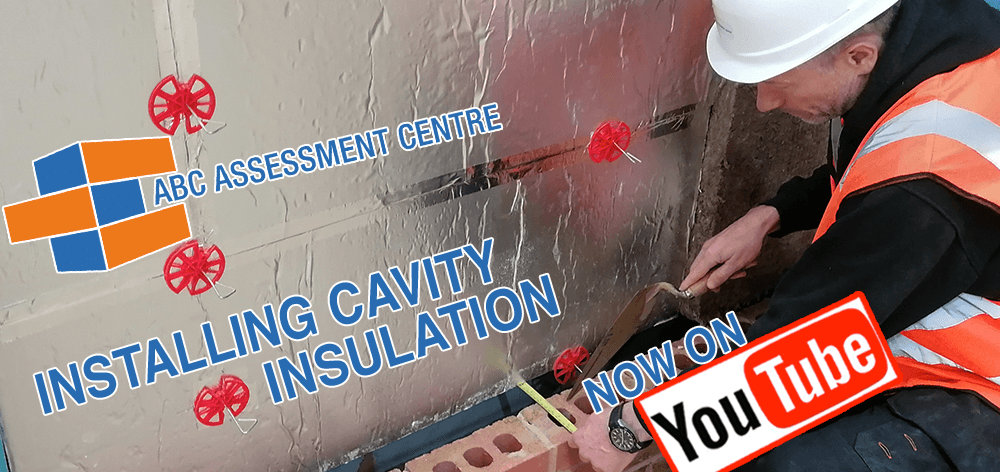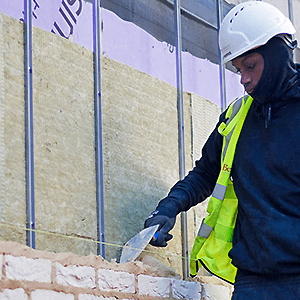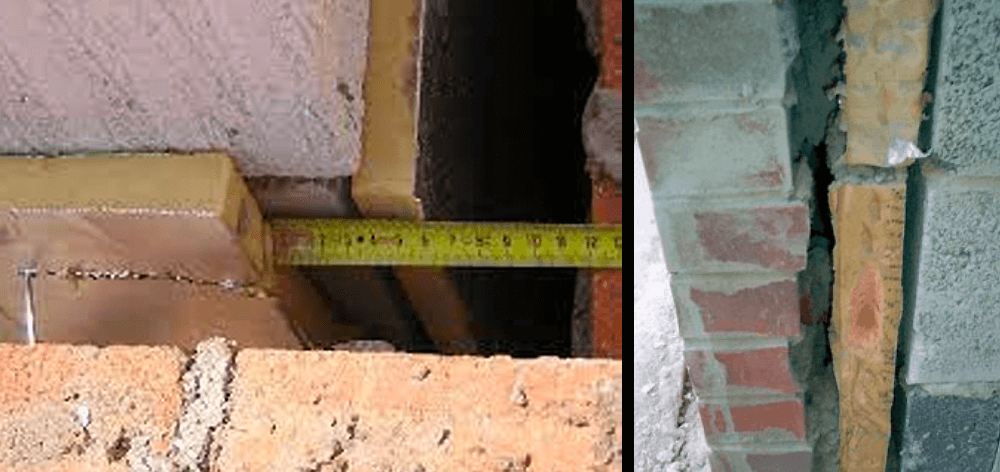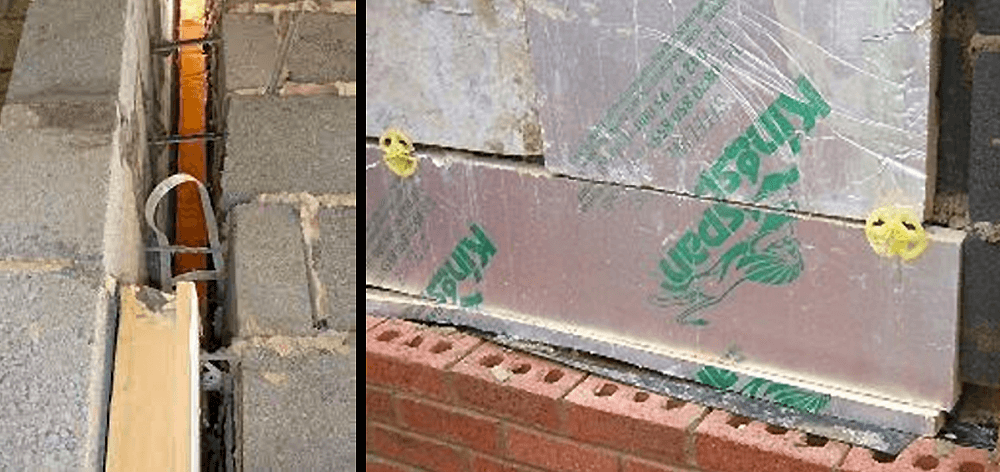Carrying on the theme of showcasing our bricklayer training YouTube content, this week’s featured modern masonry competency is installing cavity insulation.
After last week’s foray into the world of masonry support angle installation, it’s back to ‘traditional’ site work with a bang, as fitting insulation boards and batts in cavities is something every bricklayer will do, regardless of the type of site they are working on.

Why Focus On Something As Basic As Installing Cavity Insulation?
If, as I say, this is a core skill for bricklayers up and down the UK, why is there a CITB short course related to it? And why does the competency accreditation in this area exist?
Well, for one, when it comes to installing cavity insulation, more than one method exists. The installation procedure for full-fill insulation is different to partial-fill, as well as how best to position and bond the boards and batts in relation to wall ties, restraints and other elements found in the cavity such as fire barriers and cavity trays.
 Speaking from the perspective of the most modern methods of construction, where different building substrates like Steel Framed Systems (SFS) are being used extensively, there are now a greater variety of installation solutions available. For instance, the advent of tie channels where stonewool insulation is specified for partial-fill insulation applications (see photo) is something that not all operatives will have seen; therefore seeking the correct competence-based training is fundamental for their upskilling and for obtaining the relevant accreditation.
Speaking from the perspective of the most modern methods of construction, where different building substrates like Steel Framed Systems (SFS) are being used extensively, there are now a greater variety of installation solutions available. For instance, the advent of tie channels where stonewool insulation is specified for partial-fill insulation applications (see photo) is something that not all operatives will have seen; therefore seeking the correct competence-based training is fundamental for their upskilling and for obtaining the relevant accreditation.
Another development is ensuring compliance with the latest fire regulations in construction, including the amendments to Part B of the Building Regulations.
As a result of this legislation, we’re seeing a movement towards the specification of non-combustible insulation retaining clips, for example, when constructing ‘high-risk’ designated new-builds, as well as stricter testing and classification of fire-rated products.
Approved Document B states very clearly the need for robust testing before bringing cavity firestopping and insulation products to market – one of the many lessons learned from the Grenfell disaster – in order to guarantee their stated performance:
“Any test evidence used to demonstrate the fire performance classification of a product or system should be carefully checked to ensure that it is applicable to the intended use. Small differences in detail, such as fixing method, joints, dimensions, the introduction of insulation materials and air gaps (ventilated or not), can significantly affect the performance.”
Not only are manufacturers being put under the spotlight, as per the quote above, but brickwork subcontractors are as well. As it states above, there are many different elements – such as manufacturer-specific install specs, propietary fixings, joint details and levels of ventilation – which affect the performance of the finished system, so workmanship is heavily scrutinised too.
The last thing any specialist brickwork contractor needs is a claim brought against them for work done which is subsequently found to be non-compliant. What’s more, insurance companies aren’t going near cladding and firestopping in terms of professional indemnity cover these days, so it’s in a subbie’s best interests to make sure they are installing cavity insulation to the highest standards.
Too Many Examples Of Non-Compliance
And this feeds into why there is a training standard for installing cavity insulation. The Association of Brickwork Contractors‘ employer members have identified this as one of the critical areas where demonstrable competence training will inevitably lead to better quality site work and improved productivity as well as, in the process, a reduction in legacy issues.
This, together with the fact that too many examples of poor quality work are out there for all to see, provide all the justification The ABC Assessment Centre needs to offer it’s 1-day onsite training course on Bonding, Taping & Positioning Insulation Boards.
Cue a series of horror photos…


Yes, unfortunately, these are real. When you take into consideration the fundamentals of installing cavity insulation are to achieve the desired U-Value (measurement of heat transfer rate), acoustic performance and fire resistance throughout the building envelope, it’s easy to see that the above are clear examples of non-compliance.
Check out the full course description as well as a list of the topics covered in the Course Details tab by clicking on the button below:
Next In YouTube Channel Video Series
One thing we’ve done in recent times to add to our programme of 16 short courses is to create “How To” install videos for each of the practical skills. This way, we can supplement our excellent face-to-face training with top quality video content available 24/7 from any mobile device, tablet or computer.
To give Specialist Brickwork Contractors, Further Education Colleges, Main Contractors, Designers, Specifiers, Manufacturers and Suppliers a glimpse into how the launch of our YouTube channel could be valuable to their business and individuals’ professional development, we’ve created teaser videos to accompany the long-format install guides.
The next in our series of videos is – yes, you guessed it – how to correctly install cavity insulation (both full-fill and partial-fill). Filmed on The ABC Assessment Centre’s and ACS‘s patented training frames and featuring our very own Centre Manager Simon Livett and Brickwork Trainer/NVQ Assessor Ian Mitchell, we’re really happy with the finished result below…
If you like what you see, why not like the video and subscribe to the channel for all future content! Simply click the button below to go to our YouTube channel:
How Do I Get Access To The ABC Assessment Centre YouTube Channel?
The channel will have 2 types of subscription – basic and paid. Basic subscription will give you access to the promotional “How To” install videos as well as other content we’ll upload intermittently, while the paid subscription will be based on an annual fee to receive all the long-format videos and exclusive content we add over the course of the year.




